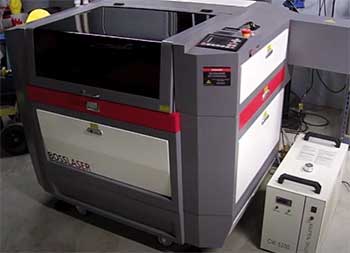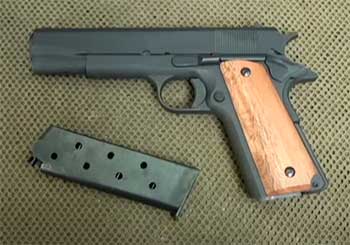I’ve always been drawn to vehicles that can conquer the wild while still turning heads on city streets. The Jeep Wrangler and Mercedes-Benz G-Class are two icons that promise just that—a blend of off-road prowess and undeniable style. In this article, I’m putting these rugged titans head-to-head, comparing their strengths, weaknesses, and unique vibes.
From their legendary histories to their modern-day features, I’ll break down what makes each special, helping you decide which fits your lifestyle. Buckle up as we explore their pros, cons, and everything in between.
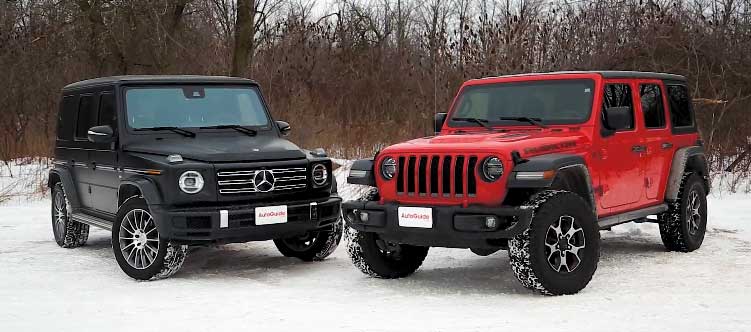
Comparison Table: Jeep Wrangler vs. Mercedes-Benz G-Class
| Feature | Jeep Wrangler | Mercedes-Benz G-Class |
| Starting Price | $34,090 | $149,400 |
| Engine Options | 2.0L Turbo I4, 3.6L V6, 6.4L V8, Hybrid | 4.0L Twin-Turbo V8, Inline-6, Electric |
| Horsepower | 270–470 hp | 416–580 hp |
| Fuel Economy | 17/23 MPG (city/highway) | 17/19 MPG (city/highway) |
| Cargo Capacity | 12.9–31.7 ft³ | 34.8–37.4 ft³ |
| Ground Clearance | 9.7–10.8 inches | 9.5–10.6 inches |
| Off-Road Features | Rock-Trac 4WD, locking differentials | Three locking differentials, G-Mode |
| Interior | Rugged, functional, removable components | Luxurious, high-tech, premium materials |
| Safety Features | Basic suite, optional advanced systems | Comprehensive suite, advanced tech |
| Reliability Rating | 8.5/10 (iSeeCars) | 8.6/10 (iSeeCars) |
| Resale Value | 73.6% after 5 years | 54.7% after 5 years |
My Journey with the Jeep Wrangler and G-Class
As a car enthusiast, I’ve spent countless hours behind the wheel of SUVs, from dusty trails to urban jungles. The Jeep Wrangler and Mercedes-Benz G-Class have always stood out, not just for their boxy silhouettes but for the stories they tell. The Wrangler is the scrappy underdog, born from wartime grit, while the G-Class is the polished aristocrat with a military past.
Driving both feels like stepping into different worlds—one raw and adventurous, the other opulent yet capable. Let’s unpack what makes these vehicles tick and where they shine or stumble.
Jeep Wrangler: The Off-Road Rebel
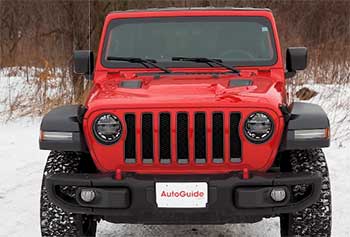
The Jeep Wrangler is like that friend who’s always ready for an adventure, no questions asked.
Its roots trace back to the 1940s Willys Jeep, a vehicle that helped win wars with its go-anywhere attitude. T
oday’s Wrangler stays true to that legacy, offering a rugged charm that’s hard to resist.
Pros of the Jeep Wrangler
- Unmatched Off-Road Capability: The Wrangler, especially in Rubicon trim, is a beast off-road. With its Rock-Trac 4WD system, locking differentials, and up to 10.8 inches of ground clearance, it laughs at rocks, mud, and steep inclines. I’ve taken a Rubicon through Moab’s slickrock trails, and it handled like a mountain goat—sure-footed and unstoppable.
- Affordable Price Point: Starting at around $34,090, the Wrangler is a steal compared to the G-Class. You can outfit a fully loaded Rubicon for less than a base G-Class, leaving room for mods like lift kits or winches.
- Customizable and Fun: The Wrangler’s removable doors, roof, and fold-down windshield make it a convertible SUV. Driving topless under the stars is an experience you can’t replicate in most vehicles. Plus, the aftermarket support is insane—think 40-inch tires, custom bumpers, or even V8 swaps.
- Strong Resale Value: The Wrangler holds its value like a champ, retaining 73.6% after five years. This makes it a smart buy if you plan to trade up later.
- Community Vibe: Owning a Wrangler means joining a club. The “Jeep wave” from fellow owners feels like a secret handshake, adding a sense of camaraderie.
Cons of the Jeep Wrangler
- On-Road Refinement: The Wrangler’s on-road manners are, well, rustic. The solid front axle and high ground clearance make it feel bouncy on pavement, and wind noise at highway speeds is loud enough to drown out your playlist. I once drove a Wrangler on a 300-mile road trip, and my ears were ringing by the end.
- Limited Cargo Space: With only 12.9 cubic feet behind the rear seats (31.7 max), the Wrangler isn’t ideal for family hauls. Packing for a camping trip requires Tetris-level skills.
- Basic Interior: Even with upgrades like leather seats and a 12.3-inch touchscreen, the Wrangler’s cabin feels utilitarian. Hard plastics and a cluttered dashboard don’t scream premium.
- Fuel Economy: The Wrangler’s 17/23 MPG (city/highway) isn’t terrible for an off-roader, but it lags behind modern SUVs. The hybrid 4xe model helps, but it’s pricier.
- Safety Features: The Wrangler’s safety suite is basic unless you spring for options like adaptive cruise control or blind-spot monitoring. It’s not as comprehensive as the G-Class.
Mercedes-Benz G-Class: The Luxe Off-Roader
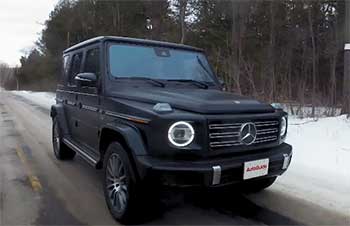
The Mercedes-Benz G-Class, or G-Wagen, is the Wrangler’s sophisticated cousin. Launched in 1979 as a utilitarian off-roader, it evolved into a symbol of luxury and status.
Driving a G-Class feels like piloting a tank with a penthouse interior, blending brute force with refinement.
Pros of the Mercedes-Benz G-Class
- Luxurious Interior: The G-Class cabin is a masterpiece. Nappa leather, wood trim, and a Burmester sound system make every drive feel like a first-class flight. I spent an afternoon in a G63, and the heated, massaging seats were pure bliss.
- Powerful Performance: The G63’s 4.0-liter twin-turbo V8 pumps out 577 horsepower, rocketing to 60 mph in 4.5 seconds. Even the base G550’s inline-six delivers 416 hp. It’s overkill for off-roading but thrilling on the road.
- Advanced Off-Road Tech: With three locking differentials, G-Mode, and adaptive dampers, the G-Class tackles tough terrain with ease. I navigated a muddy trail in a G550, and its tech made it feel effortless.
- Safety and Tech: The G-Class comes loaded with features like adaptive cruise control, lane departure warnings, and a 360-degree camera. It’s a fortress of safety compared to the Wrangler.
- Cargo Space: With 34.8–37.4 cubic feet of cargo room, the G-Class is more practical for hauling gear, though the high load floor can be a hassle.
Cons of the Mercedes-Benz G-Class
- Eye-Watering Price: Starting at $149,400, the G-Class is a financial commitment. A fully loaded G63 can exceed $200,000, making it inaccessible for most buyers.
- Poor Fuel Economy: The G-Class guzzles gas, with 17/19 MPG (city/highway) for the G550. The electric G580 improves efficiency, but it’s still not a budget-friendly daily driver.
- Depreciation Hit: The G-Class loses 45.3% of its value after five years, a steeper drop than the Wrangler. That’s a lot of money vanishing from your investment.
- Impractical Design: The side-hinged rear door and high load floor make cargo access tricky, especially in tight spaces. I struggled to load groceries in a crowded parking lot.
- Overkill for Most: Let’s be honest—most G-Class owners stick to pavement. Its off-road capabilities are rarely used, making its price harder to justify for casual drivers.
Design and Style: Iconic Boxes with Different Vibes
Both the Wrangler and G-Class sport boxy designs that scream character. The Wrangler’s slotted grille and round headlights are instantly recognizable, a nod to its WWII roots. Its rugged aesthetic, with flared fenders and exposed hinges, feels unapologetically raw.
I love how it looks like it’s ready to tackle a mountain straight from the showroom. The G-Class, meanwhile, is a study in refined toughness. Its slab-sided body and upright stance exude authority, while chrome accents and sleek LED lights add a touch of class.
Driving through downtown in a G-Class, I felt like I was in a VIP convoy—heads turned everywhere. The Wrangler’s design is about function: removable doors and a fold-down windshield prioritize adventure. The G-Class, however, balances form and function, with a polished look that’s at home in Beverly Hills or a backcountry trail.
Your choice depends on whether you want gritty authenticity or upscale swagger.
Performance: Power vs. Precision
Performance is where these two diverge sharply. The Wrangler offers a range of engines, from a 270-hp 2.0-liter turbo to a monstrous 470-hp 6.4-liter V8 in the Rubicon 392. The 3.6-liter V6 (285 hp) is the sweet spot for most, paired with an eight-speed automatic or a rare manual option.
On the road, the Wrangler feels capable but unrefined, with vague steering and a bouncy ride. Off-road, though, it’s a superstar. I crawled over boulders in a Rubicon, and its low-range gears and locking diffs made it feel invincible.
The G-Class is a different beast. The G63’s V8 delivers 577 hp and 627 lb-ft of torque, paired with a nine-speed automatic. It’s shockingly quick for a 5,500-pound SUV, but its on-road handling is surprisingly composed, thanks to adaptive suspension.
Off-road, its three locking differentials and G-Mode optimize traction. I tackled a steep, rocky incline in a G550, and the system adjusted power seamlessly, making me feel like a pro. For sheer power, the G-Class wins.
For off-road precision and versatility, the Wrangler holds its own, especially at a fraction of the cost.
Off-Road Prowess: Where Legends Are Made
If off-roading is your passion, both vehicles deliver, but their approaches differ. The Wrangler’s Rock-Trac system, high ground clearance (up to 10.8 inches), and 44-degree approach angle make it a trail dominator. Its lighter weight—about 4,200 pounds—gives it an edge on tight, technical paths.
I’ve seen Wranglers navigate trails that would make other SUVs cry uncle. The G-Class counters with its own arsenal: three locking differentials, 9.5–10.6 inches of ground clearance, and a G-Mode that optimizes throttle and suspension for off-road conditions. Its 5,500-pound curb weight can be a drawback in soft terrain, but its tech compensates.
During a muddy trail test, the G-Class’s diffs locked in sync, pulling me through without a hitch. The Wrangler is the purist’s choice—raw, modifiable, and battle-tested. The G-Class, with its high-tech aids, feels like cheating but gets the job done with less driver skill required.
Interior and Comfort: Grit vs. Glam
Inside, the Wrangler is all about utility. The cabin is spacious, with 41.2 inches of front legroom, but the materials feel budget-friendly. Hard plastics dominate, though the Rubicon’s leather upholstery and 12.3-inch touchscreen add some flair.
Features like heated seats and UConnect infotainment are solid, but the lack of sound deadening makes long drives noisy. I love the removable carpet and drain plugs—perfect for hosing out mud after a trail run. The G-Class, by contrast, is a palace on wheels.
Nappa leather, ambient lighting, and a 12.3-inch digital cockpit create a luxurious vibe. The seats are supportive, and the Burmester audio system is concert-hall quality. With 38.7 inches of front legroom and 39.5 inches in the rear, it’s roomier for passengers.
I spent hours in a G63, and the massaging seats made me forget the outside world. For comfort, the G-Class is untouchable. For practicality in rugged conditions, the Wrangler’s washable interior is a win.
Technology and Safety: Basic vs. Loaded
The Wrangler’s tech is functional but not cutting-edge. The UConnect system is user-friendly, with Apple CarPlay and Android Auto standard. Higher trims offer a 12.3-inch touchscreen, but basic models stick with a 7-inch display.
Safety features like blind-spot monitoring and adaptive cruise are optional and not as robust as competitors. I found the Wrangler’s rear camera helpful for parking, but its safety suite feels like an afterthought. The G-Class is a tech powerhouse.
Its dual 12.3-inch displays handle everything from navigation to off-road telemetry. Standard safety features include adaptive cruise, lane-keeping assist, and a 360-degree camera. The G-Class’s tech feels intuitive, though the learning curve is steeper.
During a city drive, the 360-camera saved me from a tight parking scrape. If you want a tech-laden fortress, the G-Class delivers. If you prefer simplicity, the Wrangler’s straightforward setup is enough.
Practicality and Ownership: Cost vs. Cachet
Owning a Wrangler is like adopting a loyal dog—it’s affordable but demands maintenance. With a starting price of $34,090, it’s a bargain for its capabilities. Fuel costs are reasonable, but repairs can add up due to its rugged use.
The Wrangler’s resale value (73.6% after five years) is a major plus, and its aftermarket support means endless customization. I’ve met owners who’ve turned their Wranglers into one-of-a-kind rigs for under $10,000 in mods. The G-Class, starting at $149,400, is a status symbol.
Its fuel economy (17/19 MPG) and high maintenance costs (think $500 oil changes) sting, and depreciation (45.3% after five years) hurts. But its cachet is unmatched—park a G-Class anywhere, and it draws a crowd. I parked one at a coffee shop, and people were snapping photos like it was a celebrity.
For budget-conscious adventurers, the Wrangler is the clear choice. For those chasing luxury and prestige, the G-Class is worth the splurge.
Driving Experience: Raw vs. Refined
Driving the Wrangler is an event. The steering is loose, the ride is bouncy, and the cabin is loud, but that’s part of its charm. On trails, it feels alive, responding to every input with confidence.
I took a Wrangler Rubicon through a river crossing, and its raw feedback made me feel like a rally driver. The G-Class, meanwhile, is shockingly refined for its size. The V8’s growl is intoxicating, and the adaptive suspension smooths out bumps.
On-road, it feels like a luxury sedan; off-road, it’s a tank. I drove a G63 on a highway, and its composure at 80 mph was impressive for a boxy SUV. Choose the Wrangler for a visceral, hands-on experience.
Pick the G-Class for power and polish.
Making Your Choice
So, which is right for you? If you’re an adventurer who lives for trails, mods, and the Jeep community, the Wrangler is your match. Its affordability, off-road dominance, and customizable nature make it a no-brainer.
If you crave luxury, power, and a vehicle that doubles as a status symbol, the G-Class is your ride—just be ready for the price tag. For me, the Wrangler’s raw charm and value win out. I love the idea of stripping off the doors, hitting a trail, and waving to fellow Jeepers.
But I can’t deny the G-Class’s allure—its blend of opulence and capability is intoxicating. Ultimately, your choice depends on your priorities: adventure on a budget or luxury with no limits.
Read More: Jeep Wrangler vs. Jeep Grand Cherokee
Frequently Asked Questions (FAQ)
The Mercedes-Benz G-Class edges out slightly with an 8.6/10 reliability rating compared to the Wrangler’s 8.5/10, per iSeeCars. However, the Wrangler’s simpler design often means cheaper repairs.
No, the Wrangler prioritizes rugged utility over luxury. While higher trims offer leather and tech, its interior and ride quality don’t match premium SUVs like the G-Class.
Yes, the G-Class scores an 8.6/10 for reliability (iSeeCars), but high maintenance costs and complex systems can lead to pricier repairs compared to simpler SUVs.
The Mercedes-Benz G-Class, particularly the G550 or G63 AMG, shares the Wrangler’s boxy, rugged aesthetic, though it’s far more luxurious and expensive.
Conclusion
You’re standing at a crossroads, choosing between the Jeep Wrangler’s gritty soul and the Mercedes-Benz G-Class’s lavish might. I’ve laid out their strengths and flaws, from the Wrangler’s trail-conquering affordability to the G-Class’s high-tech luxury. Whether you’re drawn to the Jeep’s community and customization or the G-Wagen’s power and prestige, both are legends in their own right.
Pick the one that matches your vibe—adventure or opulence—and hit the road (or trail) with confidence.
